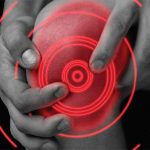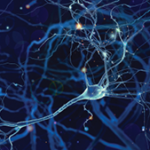What This Means

Dr. Steen Pettersen
Dr. Steen Pettersen says the findings—including the high prevalence of temporal summation—indicate that pain sensitization contributes to the complex experience of pain in hand osteoarthritis.
“This is interesting as we struggle in explaining to patients why their joints and hands hurt,” she says. “We can’t simply look at their radiographs, clinical swelling or ultrasound findings and predict their pain. Some patients experience a great amount of pain in the absence of severe joint pathology.”
The findings stand out from previous work on the topic, she says, because of the wide range of disease severity in the study population, making the results more generalizable. Adjustments for confounders ranged from social and psychological factors to age, sex and body mass index.
She says the findings point to increasing relevance for potentially mapping and phenotyping pain using sensitization data. In the future, clusters of patients with certain phenotypes may be found to be more suitable for central-acting agents or to cognitive behavioral coping strategies.
“OA pain and its heterogeneity have made pain phenotypes an important subject,” Dr. Steen Pettersen says. “I believe we still do not have enough knowledge to be able to make mechanistic pain phenotypes, but more and more evidence is pointing at a useful (role for) pain phenotyping.”
She says follow-up data are needed to explore how values seen in quantitative sensory testing change or don’t change over time and, in OA, how changes in pain sensitivity can predict worsening of hand OA.
“Another step is to explore how comorbidities, social and psychological factors relate to pain sensitization in hand OA,” Dr. Steen Pettersen says. “And finally, as quantitative sensory testing of pain sensitivity is quite new in OA research, we need more data supporting its feasibility and reproducibility.”

Dr. Kumar
Bharat Kumar, MD, clinical assistant professor of immunology at the University of Iowa, calls the findings “important and thought provoking.
“Osteoarthritis is classically thought about as a ‘wear-and-tear’ arthritis due to largely local mechanical issues,” he says. “The findings that patients with hand osteoarthritis have more widespread pain due to central pain sensitization complicates the story. From a research standpoint, it opens up avenues for further research about the neurological and inflammatory aspects of OA pain.”
Dr. Kumar says the findings from this study should prompt physicians to “start seeing hand osteoarthritis as a systemic disease that needs to be treated in a multi-modal manner, similar to fibromyalgia.”
Patients should not only be prescribed physical therapy, Dr. Kumar says, but steps to minimize pain sensitization should be taken. These can include keeping healthy sleep habits, exercising, following a healthy diet and addressing psychosocial factors, such as anxiety, depression and isolation.
“Unfortunately, our understanding of this phenomenon is still very incomplete,” he says. “More research is needed to see if these steps can specifically reduce the pain of osteoarthritis, but they have been helpful in other conditions defined by central pain sensitization, such as fibromyalgia.”

